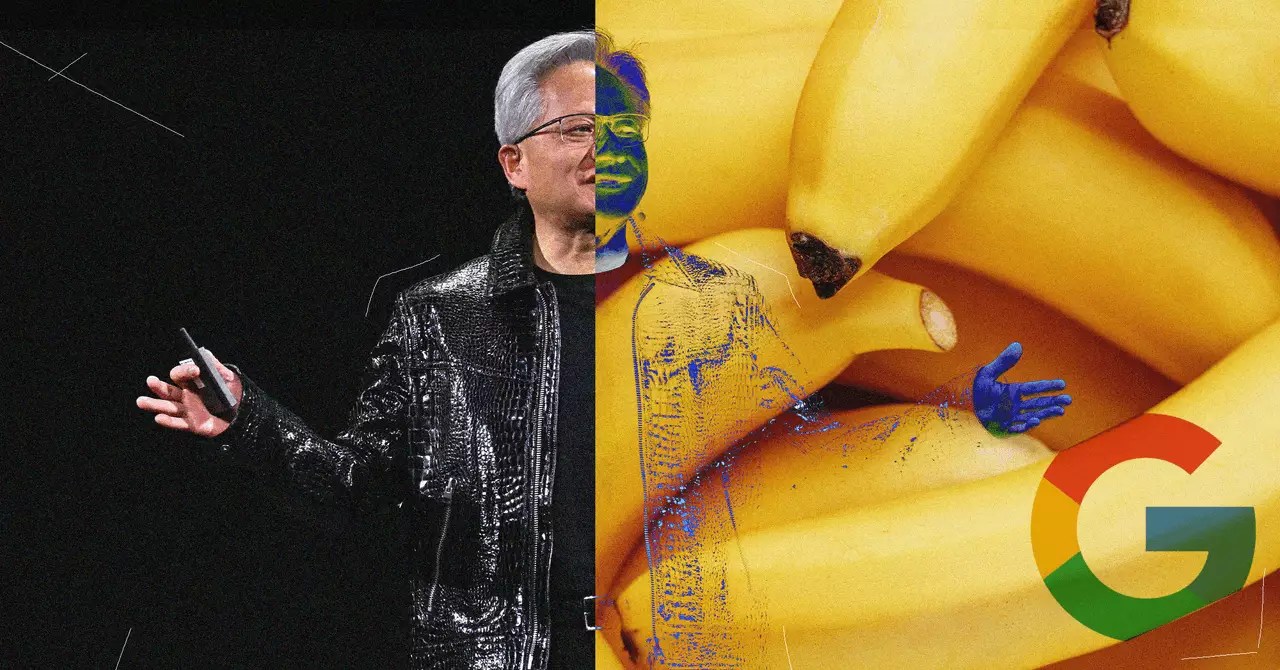In the rapidly evolving landscape of artificial intelligence, it’s tempting to get caught up in sensationalism and marketing frenzy. Yet, behind the flashy headlines and charismatic endorsements lies a core truth: transformative progress demands more than just hype—it requires genuine innovation and a strategic vision. Jensen Huang’s exuberance about AI tools like Gemini’s Nano Banana exemplifies this, but it also raises a critical question: is this enthusiasm rooted in real potential or just marketing bravado?
While Huang’s openly enthusiastic promotion of Nano Banana may seem over-the-top at first glance, it underscores a valuable shift in how industry leaders communicate their aspirations. Rather than cautious whispers, Huang boldly declares his belief that AI is the ultimate democratizer, a force capable of bridging divides. Still, the industry must scrutinize whether these proclamations translate into tangible advancements or merely create illusions of progress. It’s important to recognize that enthusiasm can sometimes overshadow the patience, rigorous testing, and ethical considerations essential for sustainable innovation.
From a critical lens, one might argue that the current wave of AI excitement disproportionately emphasizes futures wrought with unchecked potential. This can lead to over-promising and under-delivering, fostering disillusionment rather than sustainable growth. Genuine innovation comes through meticulous research, iterative development, and stakeholder collaboration—not just stirring speeches and viral images. Nevertheless, industry luminaries like Huang, with their confidence and charisma, play a vital role in inspiring new talent and investments, which are indispensable for fueling the kind of closed-loop progress necessary to truly revolutionize society.
Strategic Investments and Geopolitical Influence
The recent surge in US technology giants investing heavily in the UK’s AI ecosystem marks a significant shift in the global power balances of technology. Nvidia’s $683 million investment in Nscale reflects more than corporate expansion—it signals a strategic assertion of influence, positioning the UK as a critical hub in the AI arms race. By pouring capital into data centers and supercomputers, these companies are planting flags in a geopolitical chess game, with innovation as their key weapon.
However, such heavy investments can breed a kind of technological imperialism—where a handful of giant corporations monopolize progress, leaving smaller startups and local researchers in the dust. While this may accelerate development and create jobs, it also risks consolidating power within a few corporate giants, reducing the diversity of ideas and slowing down grassroots innovation. It’s crucial for the UK government and other stakeholders to strike a balance, ensuring investments are not just flashy but genuinely inclusive, fostering an environment where open research and ethical considerations are prioritized.
Huang’s mention of the UK’s rich history in industrial innovation—ranging from steam trains to pioneering AI research—serves as a reminder that true progress often lies beyond mere financial investments. Cultural, educational, and policy environments must evolve alongside these capital infusions to ensure the UK capitalizes on its historical strengths rather than becoming just another battleground for corporate dominance.
The Personal Power of AI in Professional and Everyday Life
One of the most compelling aspects highlighted by Huang is the increasing integration of AI into both professional workflows and personal routines. His candid admission that AI tools help him think more efficiently, craft speeches, and even critique research underscores a broader trend: AI’s role as an augmentation tool, rather than just a futuristic concept.
This personal dimension raises important questions about accessibility and dependence. If industry leaders, who are often visionaries themselves, rely on AI to supercharge their productivity, what does that mean for the rest of us? Is AI transitioning from a luxury into a necessity—potentially deepening the digital divide if access remains unequal? Huang’s stance—that AI should be democratized and universally accessible—resonates profoundly, yet it remains to be seen whether this ideal will materialize in policy and corporate practice.
Moreover, his emphasis on using multiple AI models—Gemini, Grok, Perplexity, ChatGPT—to cross-verify and critique work exemplifies a shift towards an ecosystem of collaborative AI tools. While promising, it also presents challenges: how do we ensure these tools remain unbiased, transparent, and safe, especially when they influence decision-making in critical domains? The danger lies in over-reliance on AI outputs without sufficiently understanding their limitations, a gap that industry leaders must actively address.
The Cultural Narrative of AI as the Great Equalizer
Huang’s rhetoric about AI closing the “technology divide” is inspiring but also warrants critique. The narrative of AI as a universal equalizer sometimes obscures underlying socioeconomic disparities that could be exacerbated if access isn’t carefully managed. For many communities, AI remains an abstract concept or a resource reserved for corporations and affluent nations.
Nevertheless, framing AI as a tool for social mobility and global progress aligns with a powerful, optimistic vision. It’s an assertion that technological advancement isn’t a zero-sum game but an expansive opportunity for universal benefit. Such narratives can be transformative—if backed by concrete policies that promote equitable access, education, and responsible AI deployment.
Ultimately, the real challenge is translating bold rhetoric into actionable strategies that promote inclusivity, transparency, and ethical development—so AI becomes the genuine force Huang envisions, rather than a symbol of inequality. Whether this dream becomes a reality depends on the industry’s ability to critically evaluate its goals, investments, and societal responsibilities, rather than simply celebrating its innovations.

